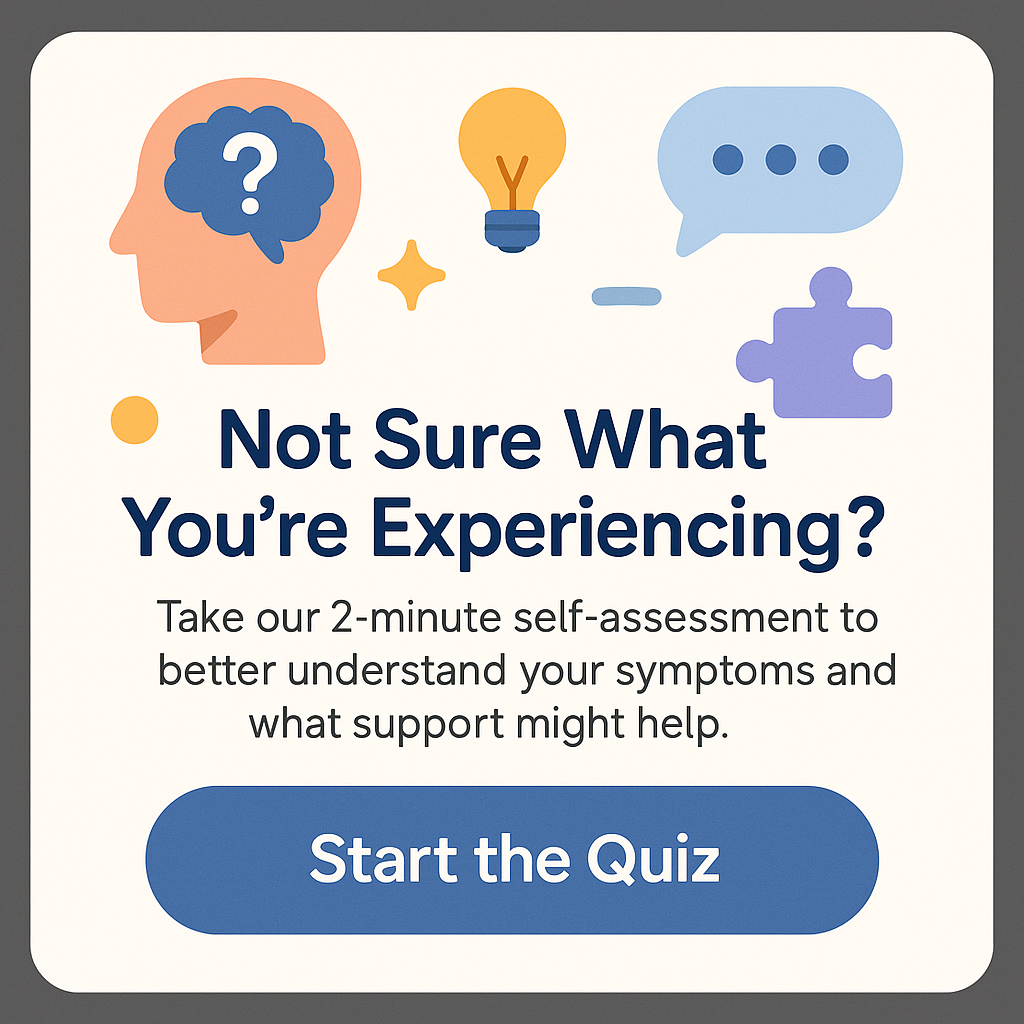Is it Autism or ADHD? Understanding the Differences and Similarities
Confusion surrounding the question, Is it autism or ADHD? is common among parents, educators, and individuals grappling with these conditions. Both autism spectrum disorder (ASD) and attention deficit hyperactivity disorder (ADHD) are neurodevelopmental disorders that share various characteristics, leading to many misunderstanding their distinctions. Understanding the nuances between these disorders can empower those affected and their circles to seek appropriate interventions, leading to better outcomes. In this comprehensive article, we’ll dive deep into the symptoms, diagnosis, treatment options, and key differences between autism and ADHD, helping you navigate this multifaceted topic.
The Basics of Autism and ADHD
When exploring the question, Is it autism or ADHD?, it’s essential to start by understanding what each disorder entails. Autism spectrum disorder is characterized by challenges in social communication and restricted or repetitive behaviors. Individuals with autism may exhibit a wide range of symptoms and severity, which has led to the term ‘spectrum’. This means someone with autism might be profoundly affected, while another might function relatively independently.
On the other hand, ADHD involves persistent patterns of inattention and/or hyperactivity-impulsivity. While some with ADHD may struggle with focusing or organizing tasks, others may display significant impulsivity and hyperactive behaviors. This disorder often presents in childhood, but symptoms can persist into adulthood. The crux of the question, Is it autism or ADHD?, comes down to how symptoms manifest and impact daily life.
Both conditions, while distinct, can coexist. Some individuals may display symptoms of both autism and ADHD, complicating the diagnostic process and management strategies. Understanding their differences can promote tailored support and more effective coping mechanisms.
Symptoms and Diagnosis of Autism vs. ADHD
When asking, Is it autism or ADHD?, one must look closely at the symptoms of each condition. For autism, key symptoms typically include:
- Difficulty in social interactions and understanding social cues
- Restricted interests or behaviors
- Challenges with communication, which may include delayed speech development
- Sensory sensitivities, such as being overly sensitive to lights, sounds, or textures
In contrast, ADHD symptoms primarily involve:
- Persistent difficulty sustaining attention
- Frequent impulsivity and acting without thinking
- Hyperactivity, which may manifest as excessive talking or an inability to sit still
- Organization and follow-through challenges
Diagnosis for both conditions usually involves a thorough assessment by a qualified professional, incorporating behavioral observations, parent questionnaires, and sometimes standardized tests. However, ADHD can often be diagnosed earlier in childhood due to evident behavior patterns in school settings, whereas autism may be identified later as social challenges become more apparent.
While exploring Is it autism or ADHD?, it’s crucial to note that individuals can present symptoms that overlap, making diagnosis and treatment nuanced. For instance, a child with ADHD might struggle with social cues due to impulsivity, but this does not necessarily indicate autism. Conversely, an individual with autism might display hyperactive behaviors, leading others to presume ADHD. Understanding these subtleties can alleviate misunderstandings and direct appropriate support strategies.
Interventions and Treatment Options
The next focal point in our quest to answer Is it autism or ADHD? involves intervention and treatment approaches available to each condition. Both autism and ADHD can significantly affect daily life, but targeted interventions can mitigate challenges and enhance strengths.
For autism, interventions often center around behavioral therapies, such as Applied Behavior Analysis (ABA), which encourages socially significant behaviors and reduces those that could hinder functioning. Speech therapy can also play a critical role in developing communication skills. Additionally, occupational therapy can help with sensory integration and daily living skills.
In contrast, treatment for ADHD typically involves a combination of behavioral strategies and medication. Stimulants, like methylphenidate or amphetamines, can be effective in managing symptoms, though non-stimulant medications are also available. Behavioral therapies often focus on creating structured environments to help individuals manage impulsivity and improve attention.
Education is another critical component of treatment. For both conditions, early intervention is vital for the best outcomes. Educators trained in recognizing and adapting learning strategies for students with autism and ADHD can profoundly impact academic success. Supporting the child in their unique learning style fosters resilience and confidence.
Parents, guardians, and educators must collaborate to ensure a supportive environment, thus addressing the question, Is it autism or ADHD?, with nuanced understanding and effective strategies. Connecting with local and online support networks can offer additional resources and community connections.
Common Misconceptions About Autism and ADHD
As we delve further into Is it autism or ADHD?, it’s essential to debunk prevalent myths surrounding these disorders. Misconceptions can perpetuate stigma and lead to inadequate support. One common myth is that individuals with autism lack empathy. In reality, many experience heightened empathetic responses but may struggle to express them or understand social interactions.
Similarly, there’s a misunderstanding that ADHD is merely a result of poor parenting or lack of discipline. ADHD has a substantial neurobiological component, and using consistent, positive reinforcement strategies can aid in managing symptoms. Additionally, ADHD is not just an issue of being “hyper”; it encompasses various cognitive challenges, including executive functioning difficulties.
Moreover, individuals often believe that autism and ADHD cannot coexist, but in fact, many people experience symptoms of both conditions. Recognizing this overlap is vital for fostering understanding and support within educational and social environments.
Educating those around us about the uniqueness of each condition aids in addressing misconceptions while paving the way for better support and acceptance. Just as the query Is it autism or ADHD? deserves careful consideration, so too does our perception of these disorders’ complexities. Growing awareness can help dismantle stigma and promote a more inclusive and informed society.
Conclusion
In tackling the question Is it autism or ADHD?, it’s clear that both conditions, while distinct, share overlapping symptoms and challenges requiring thoughtful analysis. Understanding the nuances between autism spectrum disorder and attention deficit hyperactivity disorder is essential for effective diagnosis, support, and treatment. By acknowledging the key differences, similarities, and misconceptions about each condition, we can foster a more supportive environment for everyone affected.
Encouraging open dialogue, seeking professional guidance, and leveraging community resources are critical steps in navigating the complexities of autism and ADHD. Whether you’re a parent, educator, or individual grappling with these diagnoses, remember that knowledge is empowering. Embrace the journey of learning and understanding, and together we can break the barriers that often surround these neurodevelopmental disorders.
Frequently Asked Questions (FAQs)
1. Can a person have both autism and ADHD?
Yes, it is possible for an individual to have both autism and ADHD. This dual diagnosis is sometimes referred to as comorbidity. Individuals may display symptoms from both conditions, making it essential to tailor interventions appropriately.
2. How can I tell if my child has autism or ADHD?
Observing your child’s behaviors and interactions can provide clues. If there are ongoing challenges with social skills, communication, and restrictive interests, it may indicate autism. In contrast, if your child struggles with attention, impulsivity, and hyperactivity, ADHD may be a consideration. Consulting a healthcare professional for a formal assessment is recommended.
3. Are there specific therapies that work best for autism and ADHD?
For autism, behavioral therapies such as ABA and speech therapy are effective. For ADHD, behavioral interventions, organizational coaching, and medication can help manage symptoms. The best approach often incorporates a combination of strategies tailored to the individual.
4. Is medication required for ADHD or autism?
Medication is not a requirement for either condition but can be beneficial for managing symptoms, particularly in ADHD. For autism, medication may sometimes be prescribed for related issues like anxiety or attention difficulties, but behavioral interventions typically form the core of treatment.
5. How can I support someone with autism or ADHD?
Supporting someone with autism or ADHD involves patience, understanding, and advocacy. Learning about the conditions, providing structured environments, and promoting open communication can help individuals thrive. Encourage professional support and connect them with resources that foster their development and social integration.
How Much Does an Autism Diagnosis Cost in Canada?







